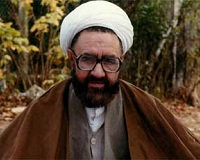Morteza Motahhari was born in Fariman village, 31st January, 1919. His father, Sheikh Mohammad Motahari who had completed his studies in Najaf was one of the leading clergies ofFariman.
Motahari received his elementary education from his father and then left for Qom to...
Motahari received his elementary education from his father and then left for Qom to...
